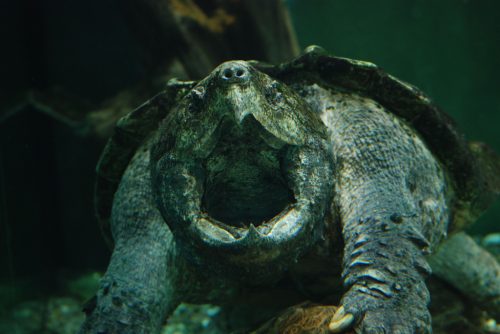Scientists have always regarded turtles’ curious ability to hide in their shells as a protective adaptation, but a study from the Jurassica Museum in Switzerland suggests that the adaptation is actually an exaptation, a preexisting trait that developed a secondary function. The research team looked at an ancestral turtle from the Late Jurassic Period, Platychelys oberndorferi, to provide evidence against the widely-accepted model of protective adaptation. They generated two models of Platychelys head retraction: a conservative model where all the relevant joints maintained contact, and an extreme model where some joints could dislocate and the turtle could retract its head further. Neither model allowed the turtle to retract its head enough to provide sufficient security against predators.
Instead of using retraction for defense, the researchers believe Platychelys developed partial retraction to spring forward and capture unsuspecting prey, a mechanism used by modern-day snapping and mata-mata turtles. Retraction evolved independently in two ancestral groups of turtles, one of which evolved the ability to vertically retract its head, while the other developed mainly lateral retraction. Natural selection directed further retraction for a protective advantage from this primary mechanism in Cryptodires, one of the two ancestral groups.
Although this hypothesis requires further testing, the team’s research emphasizes a prevalent issue in the field: creating theories not firmly rooted in fact. “Our study is constructed in three layers: facts, interpretation, and hypothesis,” said Jérémy Anquetin, lead author on the study. This type of innovative thinking reconsiders accepted norms in biological evolution.

